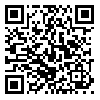BibTeX | RIS | EndNote | Medlars | ProCite | Reference Manager | RefWorks
Send citation to:
URL: http://sjsph.tums.ac.ir/article-1-180-en.html
Background and Aim: Health surveillance systems are now paying more attention to infectious diseases, largely because of emerging and re-emerging infections. The main objective of this research is presenting a statistical method for modeling infectious disease incidence based on the Bayesian approach.
Material and Methods: Since infectious diseases have two phases, namely epidemic and non-epidemic, joint distributions seem preferable for modeling disease incidence. We used a hidden Markov model - suitable for joint distributions- to arrive at a statistical model applicable to infectious diseases. Parameter estimation was done using a Bayesian method. The resulting model was then applied to monthly incidence rates for malaria to test the model's applicability to real data.
Results: The error sum of squares of the model fitted to monthly incidence rates for malaria was 190.59 and the coefficient of determination between observed and fitted values was 0.84. It appears that the hidden Markov model with a cyclic regression equation has a proper goodness of fit when applied to malaria incidence rates.
Conclusion: The hidden Markov model is an efficient statistical tool for modeling infectious disease incidence rates.
| Rights and permissions | |
 |
This work is licensed under a Creative Commons Attribution-NonCommercial 4.0 International License. |





